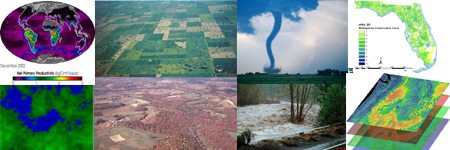Landscape Ecology (BIOL 4160/5240)

In this course we look at the application of basic ecological principles to landscape issues and the interactions between spatial pattern and ecological processes.
BIOL 4160 is the undergraduate section and BIOL 5240 is the graduate section.
Students are challenged with class activities, critique write-ups, readings with class discussions, hands-on exercises using GIS and models, and issue debates.
Goals for the course
- Learn basic concepts of landscape ecology, including how species, populations, communities and ecosystems interact over changing scales of time and space.
- Increase knowledge of landscape pattern and how to characterize it, the dynamic nature of ecosystem processes and the factors that influence them.
- Develop problem solving skills and approaches, including GIS, Remote Sensing, model building and data analysis.
- Refine critical thinking skills.
- Enhance understanding of human impacts across time and at many scales.
Topics Covered
- What is landscape ecology?
- Patches, matrix, corridors, and networks
- Issues of scale and heterogeneity
- Landscape models and GIS
- Landscape pattern: causes and measures
- Disturbance dynamics
- Interactions between organisms and landscapes
- Ecosystem processes
- Applied landscape ecology & natural resource management

